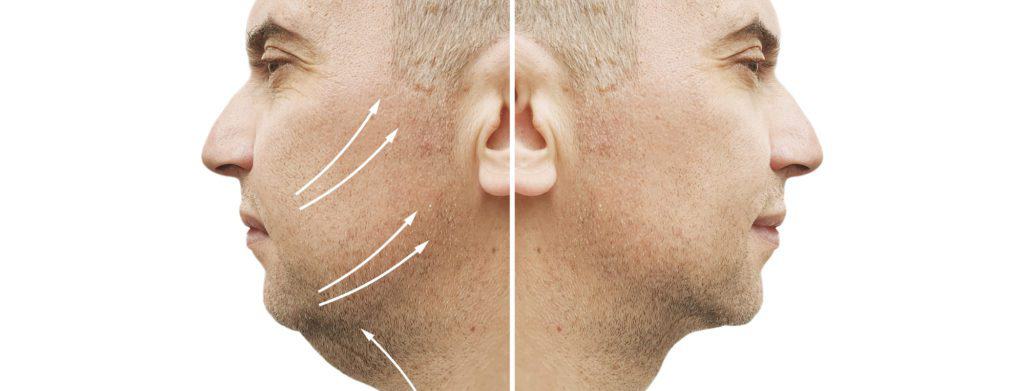A Closer Look At The Male Facelift
Does a male facelift differ from a female facelift? First, it’s less common for men to undergo a facelift because they are more concerned that others know that they have undergone facelift surgery. Most important, male facelifts are more technical than females due to several attributes unique to the male face.
Male faces possess several characteristics that present challenges to facelifts:
- Men possess thicker skin then women, making their skin harder to lift. The thicker skin extends throughout the cheeks and the neck. Thicker skin, especially in the neck region, can make detecting neck fat more difficult. Yet, the fat in the neck region must be comprehensively removed to lighten the weight of the neck skin so that it is effectively lifted.
- Neck liposuction in men must be performed cautiously to avoid injury to hair follicles. Their facial hair is one reason why face and neck lifts are more challenging in males than females, but surgeons do not always consider this.
- Another technicality of male facelifts is that most men wear short sideburn hair, exposing the area around the ear where facelift incisions are positioned. This exposure means a surgeon must ensure that the facelift incisions heal well.
It is critical to perform the Facelift without undue tension so that the incisions heal well. Minimizing tension is the most effective way to optimize surgical incision line healing. Tension is best minimized using the gold standard in facelifts, called the extended SMAS dual plane lift. The extended SMAS facelift removes 60 to 70 % of the weight off the skin lift on a deeper fascial plane.
Another maneuver specific to male facelifts is to avoid aggressive excision of skin redundancy; this means removing just enough to eliminate excess skin but not overdoing it.
A final skill required to complete the incision line repair is to do the sutures in multiple layers, often called the plastic or reconstructive surgery closure. You have only to look at bad plastic surgery pics to see the difference between a plastic surgeon’s suture technique and a cosmetic or general surgeon.
Why Do Men Choose Facelift Surgery
Men and women consider getting a facelift if they feel their faces show aging signs. These may include:
- Deepening of the nasolabial folds
- Deepening nasojugal grooves
- Jowling
- Sagging and fullness in the neck
Since various options are available to rejuvenate your face and neck, you will likely want to discuss your desired outcomes before committing to a complete male facelift. Regardless of the various rejuvenating procedures, the Facelift remains one the most popular options for men troubled by aging facial and neck changes. The male Facelift, which addresses the neck, chin, and lower face area, will improve facial wrinkles, sagging skin, and jowls.

What Is The History Of The Male Facelift?
The history of the male Facelift starts with the introduction of the SMAS. As described above, aggressive lifting of the SMAS is critical to eliminating tension on the facelift incision line. The SMAS is a fascial layer that covers the face and neck muscles that traverse the region. Dr. Bruce Connell popularized the SMAS as a routine part of the male Facelift. The extended SMAS remains the gold standard in male facelift surgery for superior results. In fact, this technique is used in celebrity plastic surgery.
Not all plastic surgeons use the SMAS facelift. Be sure you find one trained in this procedure, if possible, by Dr. Connell.
Benefits of a Male Facelift
Good skincare and anti-aging products can only do so much. There is no such thing as a facelift in a bottle. For some men, the time comes to consider a surgical approach.
There are many reasons why men choose to undergo the extended SMAS facelift. One of the main ones is improving the appearance of aging features such as deep creases along the cheeks, prominent jawline, and sagging neck. Another reason is to enhance the overall shape of the face, which for males means squaring off the face and creating a chiseled jawline.
What’s Next?
If you have questions regarding our article “Does A Male Facelift Differ From A Female Facelift?” or would like to schedule a consult with one of our SMAS Facelift trained surgeons.